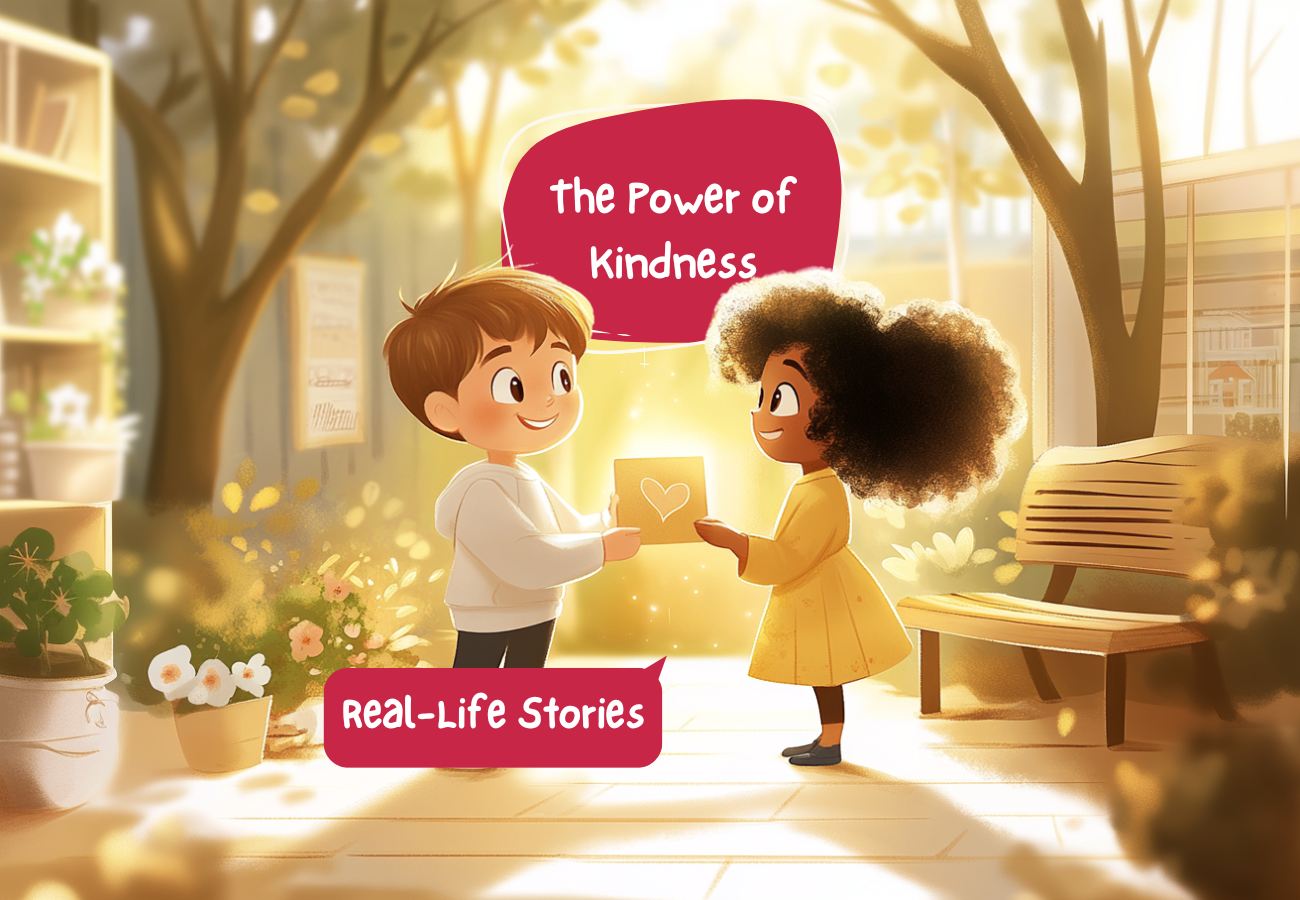The Art of Providing Positive Feedback

Time and time again, positive feedback and positive reinforcement have proven to be integral necessities to thriving and building character. And while this applies to many stages of life, it is especially true for school-aged children. The transformative and healing power of positivity is easily accessible through simple changes to our mindset and lifestyle. In this blog post, we will further explore that notion in detail and provide a foolproof guide to mastering the art of uplifting children through the usage of words.
The Impact of Positive Feedback
Positive feedback is a lot more impactful than one might think. Such encouragement can build a kid’s confidence, increase their feelings of self-worth, and motivate them to grow emotionally and be ambitious. With children, such effects can be long-lasting, and they can even be the foundation for an emotionally healthy and confident adult.
Studies also show that positive feedback allows children to remain engaged in tasks. This is crucial for long-term studying, especially since it keeps children both engaged and motivated to continue. At an age when children and adolescents are experiencing short attention spans from overly stimulating and fast-paced social media content, this method becomes more needed than ever.
Dr. Cindy Hovington, a neurologist who specializes in matters related to parenting and children’s emotional health, highlights a story of a little girl she worked with. The girl was failing second grade with no motivation or will to study or even put any effort into tackling her schoolwork. Dr. Hovington decided to rely on positive feedback to change the situation. She instructed the girl to keep a diary highlighting positive things she had accomplished during the day. Her parents and teachers would also contribute to the diary daily. Within just a couple of weeks, the girl was doing much better academically, and she was even looking forward to school. This story perfectly highlights the effective and transformative power of positive feedback.
The Art of Being Specific
When you are specific with your feedback, it encourages particular behaviors and actions. It also helps the receiver of the feedback feel seen and that their efforts did not go unnoticed, which is very motivating. It further allows you to establish a connection with the kid.
To give precise compliments that focus on specific achievements, qualities, or efforts, it is vital that you empathize with the journey of the children. Try to understand the level of complexity of the task at hand in relation to their abilities. When you walk a mile in their shoes, you start noticing the little wins. You also begin to appreciate their efforts more. All of these things combined open your eyes to the qualities and the efforts that deserve to be complimented and positively reinforced.
To better understand this, let’s look into the following scenarios:
- A student with a fear of public speaking has just given a presentation in front of the entire class. In this case, it is best to direct your compliments to their bravery and courage in overcoming their fears rather than to the content of the presentation. Suitable feedback would be: “You are very strong for doing this, and you should be extremely proud of yourself. I always knew you were brave.”
- A kid has eaten foods they do not usually like, or at least they attempted to eat them. Feedback to give in this situation is: “I am super proud of you. I know it’s not your favorite food, and you still did such a great job trying to eat it. This food will make you so strong and big.”
- A child has packed their toys. Regardless of whether the effort was according to your standards or not, this behavior should be reinforced. They might even strive to do better next time. In this scenario, the following would be the appropriate feedback: “You packed your toys SO well! Now your toys are safe, and you know where to find them. You are very smart for deciding to tidy up.”
Authenticity and Sincerity
The more authentic the feedback is, the more likely it is that it will be effective. Sincerity breeds trust and strengthens the bond you are building. As mentioned earlier, the feedback should also be as specific as possible. With time and practice, these aspects will naturally come hand-in-hand.
With that in mind, if you truly want your efforts to be fruitful and if you want to create this bond with your child, the way to go is by genuinely expressing your admiration and appreciation for even the little things that they do. That way, you will watch them become the best versions of themselves.
Sincerity can be conveyed not just with words but with your tone and body language as well. Here are some tips to convey sincerity:
- Your tone should be excited to show the magnitude of your appreciation.
- Use a voice that children attribute to good emotions.
- Your body language should show confidence in what you have to say. For instance, maintain eye contact.
- Children pick up on facial expressions well, so make sure to smile and appear friendly.
Recognizing Effort and Progress
Once the methods of positive reinforcement are implemented, change in behavior is almost guaranteed to be observed. And while this is a great thing, you must also be able to change your tactics accordingly to keep up with the progress. In other words, recognizing and celebrating the efforts and progress are a must for the methods of positive reinforcement to continue working.
Journeys are never a straight path, and you should persevere with your encouragement regardless of whether the change is fast and noticeable or slow and hard to notice. The journey itself is the method, so acknowledge it as best as you can. Further, this aids in building the child’s confidence even more and teaching them valuable lessons along the way.
Thus, make the effort to notice the little steps that others are taking. Recognize and applaud their dedication, point out their improvements, and hail their perseverance.
The Power of Encouragement
In relation to our previous point, throughout the journey, you must be encouraging. Encouragement is an integral part of positive feedback for the following reasons:
- Encouragement fills the receiver with determination to complete the task.
- It increases self-esteem.
- It keeps them motivated.
- It increases the likelihood of achieving goals.
The way it unfolds is that, as the child progresses in their personal journey, or even just in life in general, the challenges become tougher. They might fail a few times along the way, which makes them feel incompetent or that the tasks are much harder than they are. Your encouraging words and valid advice will surely keep them inspired and motivated to keep going. With positive feedback, they will not feel like they lack the skills necessary to tackle a challenge and pursue their goals.
To uplift and instill confidence along the journey, focus on giving positive feedback that relates to their progress itself. Tell them how long they have come alone, how much they’ve already overcome, remind them of challenges they tackled before, and point out what they’re doing right to try to solve a task. Always remind them that they have what it takes.
Constructive Feedback with a Positive Spin
When giving positive feedback, take note of your tone. Your tone should be serious and enthusiastic. This combination is more believable and appropriate. Try giving the same compliment in different tones, and hear the difference in how they sound like.
You are encouraged to offer your own suggestions for improvement along with affirming positive feedback. There are many ways to go about this, and different things work for different people.
Here are some examples of constructive feedback that encourage development and focus on growth:
- “You solve problems in a very smart way! It’s great that you take everyone’s feelings into consideration, but maybe next time you can think more about what you want as well.”
- “Your artwork is great! You keep getting better every day, and I see that you do much better with drawing nature than with drawing faces. Would you like to practice drawing faces more?”
Timing and Delivery
Children need reinforcement on their actions instantaneously. Giving positive reinforcement sometime after the action is done will not give them the same level of fulfillment and encouragement. They need to remember how they felt at the time or right after completing the task.
The appropriate delivery methods of timely reinforcement ideally take place in face-to-face interactions when you can make use of facial expressions, body language, and tone of voice. Written notes are useful when your child will spend some time away from you, like at school. A written note encouraging them to keep going with their day can feel encouraging and time-appropriate.
Creating a Culture of Positive Feedback in your family
Fostering a culture of positive feedback in personal and professional relationships builds trust, makes way for development and growth, enhances communication and workflow, and builds confidence. These aspects allow for greater productivity and increased levels of satisfaction in that setting, whether that be at home or at school.
Positivity can be promoted by complimenting others, encouraging their efforts, celebrating their achievements, being a listener when needed, and offering help to those who need the push.
We have learned today that everyone can master the art of providing positive feedback. All it takes is some practice. Practice being specific with your positive feedback, timely, and sincere. Your positive feedback can also include constructive criticism, a recognition of the efforts and progress of kids, and encouragement to keep going. Once you begin to see how grateful and happy your words will make those around you, you will realize how impactful you can be. And so, what are you waiting for? Embark on your journey of mastering positive feedback, inspiring others, and creating a world where kind words and uplifting sentiments thrive!
More articles

How Technology Can Empower Your Kids to Learn, Grow, and Thrive
Technology often gets a bad rap when it comes to its effects on children, including issues related to screen time, cyberbullying, and online distractions. While these concerns are valid, these misconceptions should not overshadow its incredible potential to enhance education, creativity and well-being for your child when used responsibly and mindfully. When used appropriately, technology […]

Using Alicia Ortego’s Books in the Classroom: Tips and Examples
In today’s classrooms and after-school programs across America, teachers and educators are constantly looking for effective ways to support children’s social-emotional learning (SEL). Alicia Ortego’s My Superpower books have become a favorite tool for many educators to encourage kindness, mindfulness, confidence, and other important values in young learners. Here are some real-world-inspired ways teachers and […]

The Power of Kindness: Real-Life Stories That Inspire and Transform
Kindness isn’t just a feel-good concept – it’s a force that shapes communities, builds bridges between people, and even rewires the brain for empathy and connection. From small children to grown adults, acts of kindness – both given and received – leave lasting impressions. At Alicia Ortego, we explore values like kindness through storytelling. Today, […]




